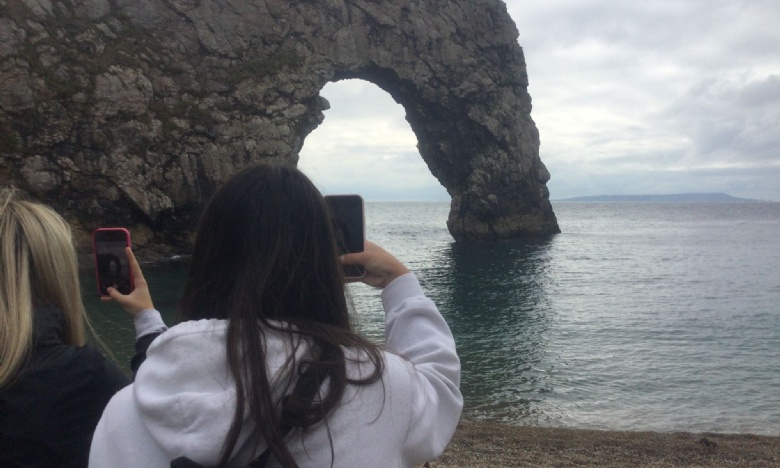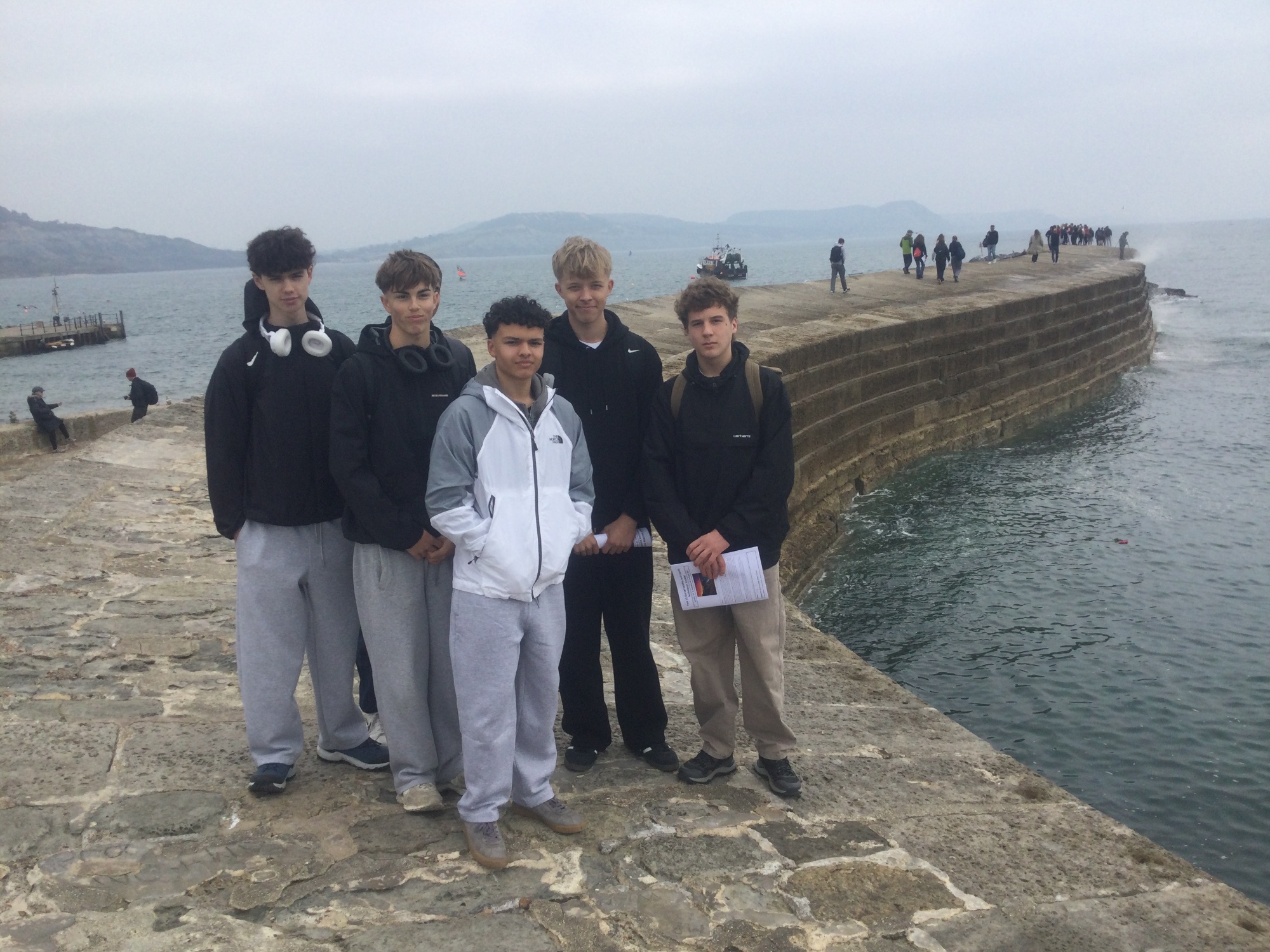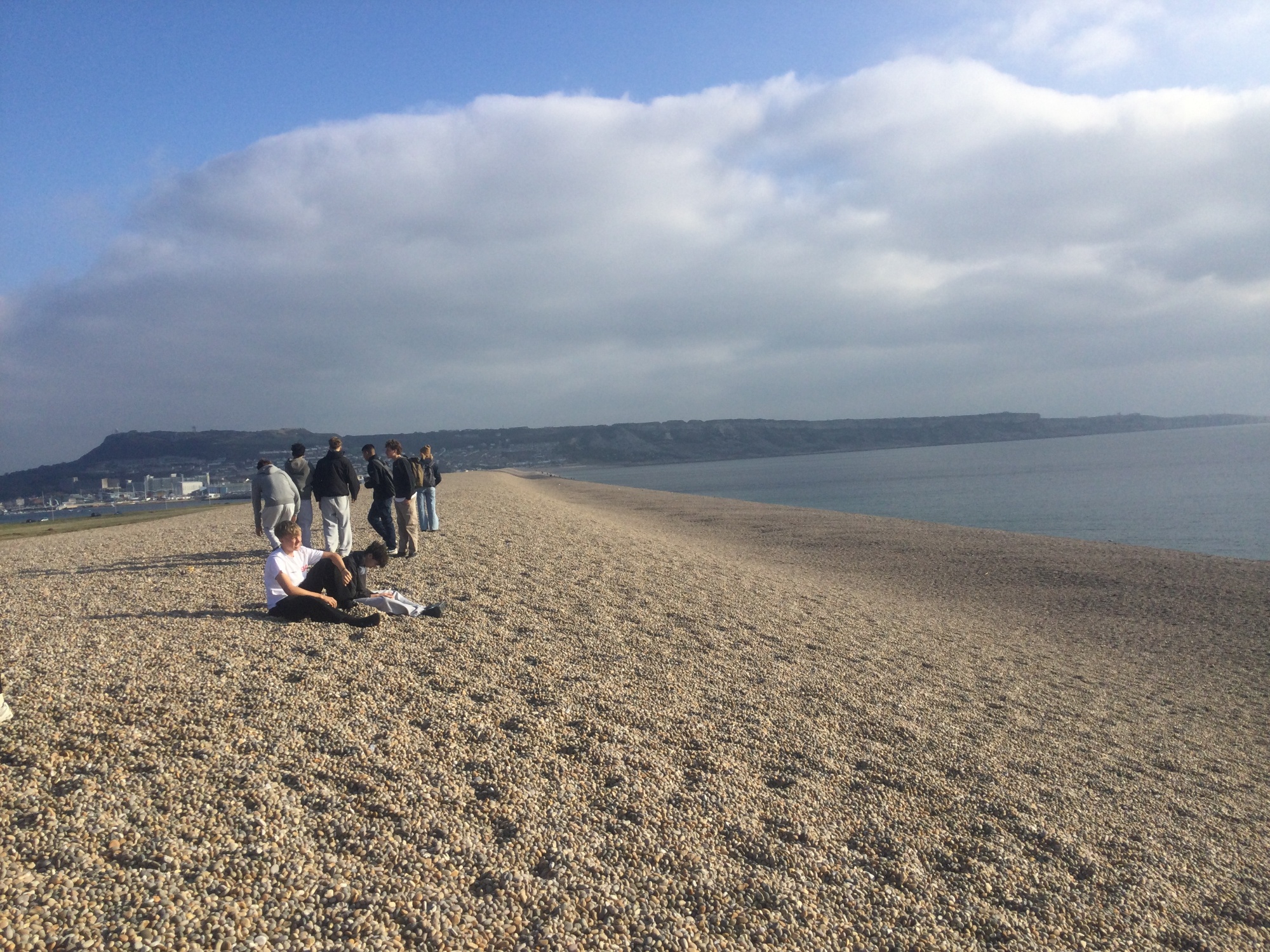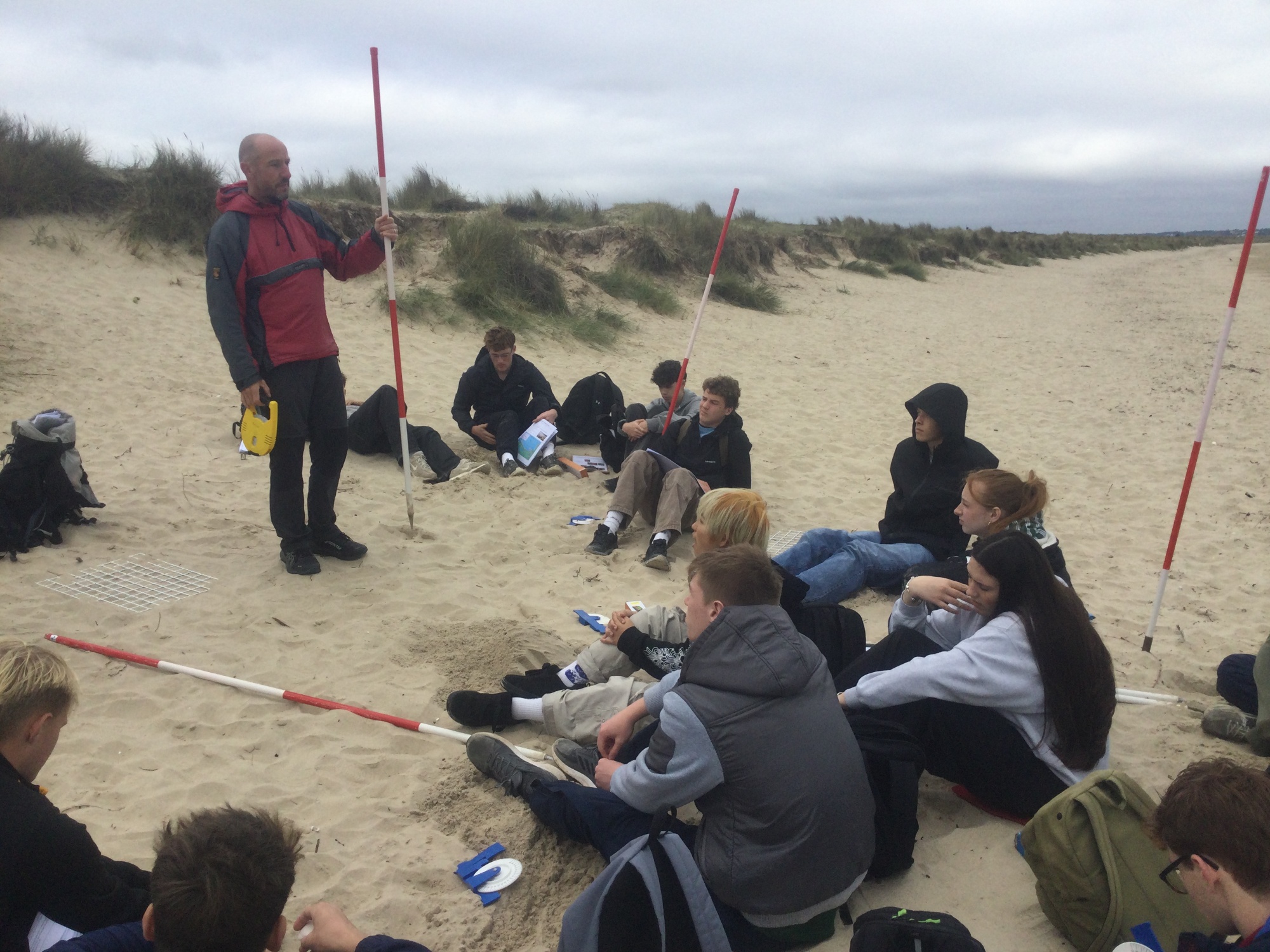Geographers head to the Beach

Year 12 Geographers headed to the Dorset coast for three days as part of their A level course
Last week thirty three Year 12 pupils headed down to the Dorset Coast as part of a Geography field trip. The aim of this was to consolidate some of the work done in lessons on their first module on Coasts. The other aim was to give them ideas for their own independent study that they carry out as part of the A level.
The sun was out when we arrived at Lyme Regis, although the tide was in, which meant we couldnt initially get onto the wave cut platform, just one example of the landforms we look at along the coast. Coasts are dynamic environments and their are lots of great examples of erosional and depositional landforms in the UK. The Jurrasic coast of Dorset has a large variety of different features due to its Geology and importance for tourism. We had lunch in Lyme Regis after a walk along the famous Cobb harbour wall.
Sadly the pulled pork sandwiches had sold out so not everyone got to try one. Lyme Regis makes a good study for coastal management and one that we use as a case study. It is also where Mary Anning the world famous paleontologist collected her first dinosaur fossils.
After this first stop we headed to Chesil Beach, Europes largest Tombolo, a huge depositional barrier beach that links the mainland with the island of Portland. There are apparently 180 billion pebbles on this beach, although we are not sure who counted them. This is a great landform to consider how coasts change over time with shifting currents and sea levels.
From here we headed to Swange where our hostel was. After tea we went down to the 'Funworld' arcades for our evenings activity.
On our second day we headed to Lulworth Cove, where we looked at the different geology of a concordant coastline and how it allows erosional coves to form. After an ice cream we then took on the walk over to Durdle Door, one of the best examples of an Arch in the UK. We also looked at possible study ideas on Swanage beach, and sampled a range of methods to collect data.
That evening we headed out to Poole to have a go at bowling. Well done to Matt and Tom who scored the highest number of points, they even beat Mr Lane.
Our final day we headed to the Studland Sand Dunes, to look at how they are managed and how they have changed over time. This process of succession has led to some distinct patterns in terms of the biotic and abiotic factors there. It was a windy and cold day on the beach. Despite this the pupils worked hard and collected some great data. In the summer of year 12 pupils have to collect their own data as part of theur NEA. Every year some of the Geographers head back to the Jurrasic coast to collect this data. All in all it was a great few days away and the pupils were a credit to the school.



